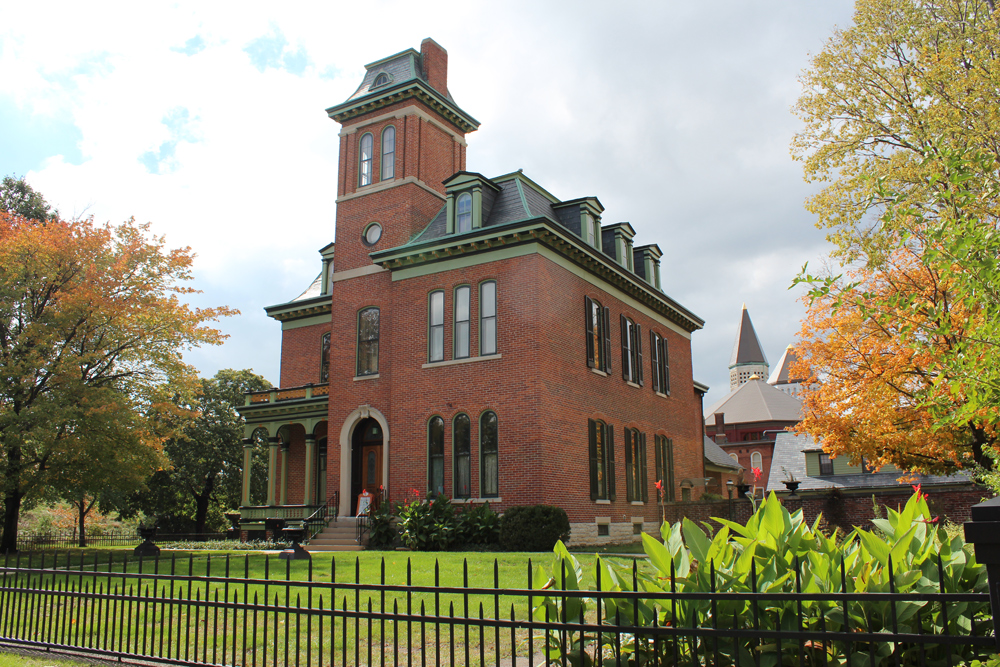Founded in 1960 as Historic Landmarks Foundation of Indiana, Indiana Landmarks has grown from an all-volunteer group to become the largest, nonprofit, statewide preservation organization in the United States.
The organization is headquartered in Indianapolis at , the former Central Avenue Methodist Church, 1201 Central Avenue. Its mission to “revitalize communities, reconnect us to our heritage, and save meaningful places” is carried out through a regional office network that stimulates grassroots efforts. Regional offices in Aurora, Richmond, Evansville, Gary, Indianapolis, New Albany, South Bend, Terre Haute, and Wabash distribute programs and services statewide.

In 1959, , Marion County’s executive director of the Indianapolis Metropolitan Planning Department, convened a group of citizens interested in preserving the city’s architectural heritage, which was changing rapidly due to demolitions and interstate construction downtown. Among those in attendance were philanthropist and industrialist and architect . James recruited his young employee, , to join the new organization’s board of directors.
McLaughlin worked closely with Eli Lilly on early projects, including the organization’s first major rehabilitation, the transformation of the at 1204 North Park Avenue, built around 1865. In 1969, Lilly donated stock to the organization, establishing its endowment. McLaughlin continued as the board’s chairman emeritus until his death in 2017.
The Second Empire-style Morris-Butler House opened in 1969 as Indiana Landmarks’ headquarters and a museum of Victorian decorative arts, managed by organization president Robert Braun. The Morris-Butler House is now part of the Indiana Landmarks Center campus and serves as offices and a rental venue.

In 1971, the headquarters moved to the Waiting Station at where it remained until 1991 when the organization moved to the former Kuhn House at 340 West Michigan Street. The building was renamed the Williamson Center in honor of , the organization’s president from 1974-2005.
In 1977, Indiana Landmarks established an Indianapolis Field Office in the at 1028 North Delaware Street, which began rescuing vacant buildings through a revolving loan fund developed in the 1970s to restore the Historic District. In the 1970s and 1980s, Indiana Landmarks purchased approximately one-third of Lockerbie’s houses and a majority of its vacant lots, reselling them with protective covenants that required restoration or compatible new construction within a specified period. The former field office is now Indiana Landmarks’ Central Regional Office serving Bartholomew, , Brown, , , , Howard, , Marion, Monroe, , Tipton, and counties.
Along with Indiana Landmarks’ other regional offices, the Central Regional Office assists in nominating properties to the National Register of Historic Places, offering technical assistance, and organizing public programs and tours that educate people about the economic and cultural benefits of historic preservation.
In 2011, under the leadership of its third president, Marsh Davis, the organization completed conversion of the former Central Avenue Methodist Church at 1201 Central Avenue into its state headquarters. The $21 million rehabilitation included an investment of $17 million from the Cook family of Bloomington, Indiana. The building includes office space, two theaters, an art gallery, meeting rooms, and catering facilities used for programs, events, and rentals.
Each year, Indiana Landmarks staff serves hundreds of communities through diverse programming aimed at saving endangered historic resources. Statewide programs include Endangered Places grants, loans, and acquisition funds endowed by the Efroymson family; Historic Preservation Education Grants, in collaboration with ; African American Heritage Grants; and Legal Defense Grants. Sacred Places Indiana assists congregations in historic houses of worship with stewardship, community engagement, and fundraising. Additional programs include workshops, lectures, tours, special events, and publication of a bimonthly magazine, .
In Indianapolis, the organization operates a special fund established in partnership with the to offer grants that support nonprofit organizations working to preserve historic buildings and neighborhoods in Marion County.
In August 2022 a $5 million Lilly Endowment Inc. grant and additional financial support allowed Indiana Landmarks to expand beyond the historic preservation of buildings. The Black Heritage Preservation Program aims at identifying, protecting, and celebrating historically significant places that might or might not include during historical structure.

Help improve this entry
Contribute information, offer corrections, suggest images.
You can also recommend new entries related to this topic.